[[“value”:”
Thank you for reading this post, don't forget to follow and signup for notifications!
David Higginbotham
Suppressing a 9mm handgun is one of the easiest and most rewarding upgrades you can make—quieter shots, softer recoil, and faster follow-ups. This short guide explains the must‑know pieces (threaded barrels, Nielsen devices, ammo choice, plus practical tips on choosing a suppressor so your setup cycles reliably and fits your shooting needs.
Why Suppress a 9mm?
The rationale for suppressing a 9mm goes well beyond noise reduction — recoil management matters, too. The best reason may be the pairing of the two: reduced recoil and quieter reports make training far more effective.
But getting a grip on handgun suppression requires a bit of technical know-how: how the suppressor attaches to the gun, and what ammunition you run through it. There’s one element nearly every 9mm handgun shares that few people fully understand: the action.
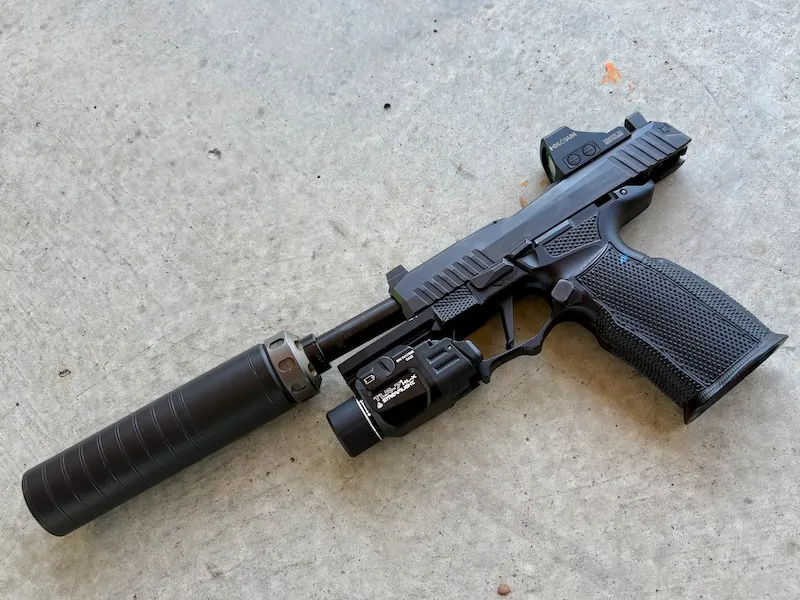
Understanding Short Recoil Actions
Almost every modern 9mm pistol uses a short-recoil action. When a round fires, pressure builds behind the bullet and drives it down the barrel — and that same expanding gas pressure pushes the breech rearward. For a fraction of a second, the barrel and slide move together; then the barrel’s rearward travel stops while the slide continues, opening the breech. That timing lets the extractor pull the spent case free as the slide travels rearward.
The barrel typically tilts in a motion we call a “tip,” while the slide travels in a straight line. If the barrel were stopped instantly (or locked down, as in a fixed-barrel design), too much energy would be returned into the frame and mechanical connections. The short-recoil system lets the gun flex out the recoil energy in a productive process that also clears the spent brass and chambers a new round as it returns to battery.
The gun flexes, the shooter absorbs some shock, and the springs complete the cycle — all of which we usually take for granted.

What happens when you add a suppressor to a short-recoil-operated pistol?
Adding a suppressor changes that delicate dance by increasing the weight — and therefore the moving mass — at the muzzle.
When I say that the dance is “delicate,” I mean that all those moving parts are tuned to the specific forces produced by different ammunition types. Extra weight from a suppressor can slow the movement of the slide and barrel, preventing the short action from cycling as intended.
Slowed movement — the same symptom you see with underpowered ammo — can prevent the action from fully cycling, effectively turning the pistol into a single-shot. Even worse, it can cause malfunctions such as stovepipes or double-feeds from failures to extract or eject.
And then you get to practice clearing problems. There are benefits to that, but meh. I’d rather have a reliably functioning system. There’s a simple solution: the Nielsen Device.

Essential Addition: A Nielsen Device (Piston)
With the gun that needs to move unhindered on one side of the equation and the suppressor inhibiting movement on the other, we have a problem. A Nielsen Device (sometimes called a piston) is the bridge that solves the problem by allowing the action to cycle despite the added weight.
Essentially, it’s a spring-loaded coupling between the gun and the suppressor. One side screws onto the threaded barrel; the other side is housed inside the suppressor. Once assembled, the unit threads onto the barrel and usually looks like a single piece.
When the gun fires, the barrel and piston move rearward as intended. The suppressor body initially stays still while the spring compresses; then the spring returns everything to battery. For short-recoil pistols this is a must.

Alternative Action Types
Some .380 pistols (for example, the PPK) and many .22s have fixed barrels. Some .45 ACP designs use rotating barrels (Beretta Cougars, for instance). But semi-automatic 9mm pistols are almost always short-recoil.
For those who are technically minded, there are other action types out there. Roller-delayed blowbacks, like the MP5 and the old HK P9, work well — especially with longer barrels that generate more gas pressure, as in the MP5.
Gas-delayed blowbacks like the HK P7 never fully caught on. And there are some compelling developments in lever-delay actions, like Rideout Arsenal Dragon.
Odds are, if you own a P9 or P7, you aren’t asking how to suppress it. The MP5, though, is another story and should have a QD suppressor mount without a Nielsen device.
Dedicated 9mm Suppressor or Multicaliber Option?
Some suppressors are built to the exacting specifications of 9mm. The benefit of a dedicated 9mm suppressor, as I see it, is the ease of use. These suppressors are purpose-built to handle the cartridge and the host platform.
Multipurpose designs span a wide range of calibers, from rimfire up through larger rifle rounds. If you need a single can to cover everything from pistols to rifles, a multicaliber hybrid will give you that flexibility.
No matter which path you choose, make sure you have the correct piston or mount for your barrel. And yes — you’ll need a threaded barrel.
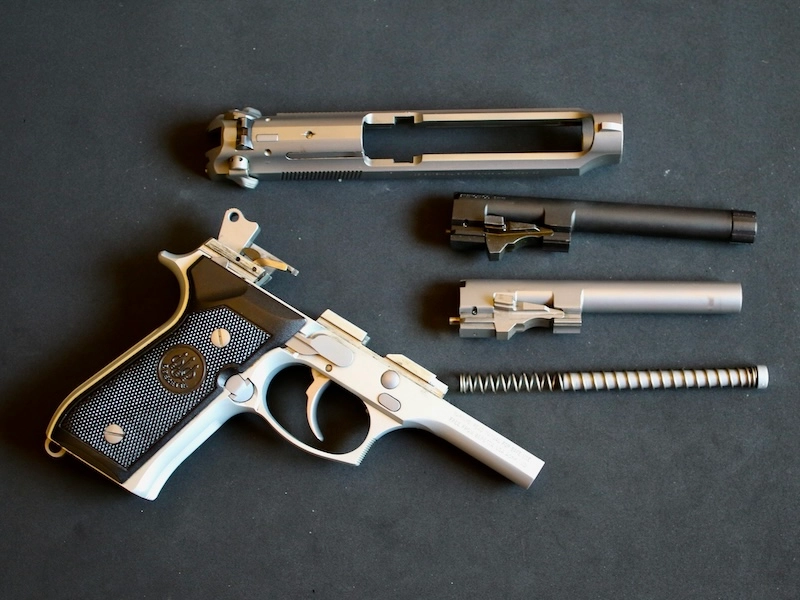
How To Choose the Right One?
Start with the basic question: is this suppressor for a 9mm pistol only, or do you need one that will also handle rifles, PCCs, and other platforms? Your answer will narrow the field immediately.
If you want a true all‑around can that covers everything from rimfire up through larger rifle rounds, look at full‑spectrum hybrids such as the Hybrid 46M. If you want broad multi‑caliber coverage but don’t need the very highest‑end rifle capability, the Omega 36M is a sensible compromise that will reliably cover 9mm and many other calibers.
If you’re focused on 9mm but occasionally plan to use the suppressor on larger sub‑guns or rifles, consider models that bridge the gap: the Spectre 9 or Omega 9K are both good fits. The Spectre 9 offers a traditional round profile and is light and compact for PCCs and handguns; the Omega 9K is a clean, simple package that works well on 9mm and transitions comfortably to .300 BLK in many setups.
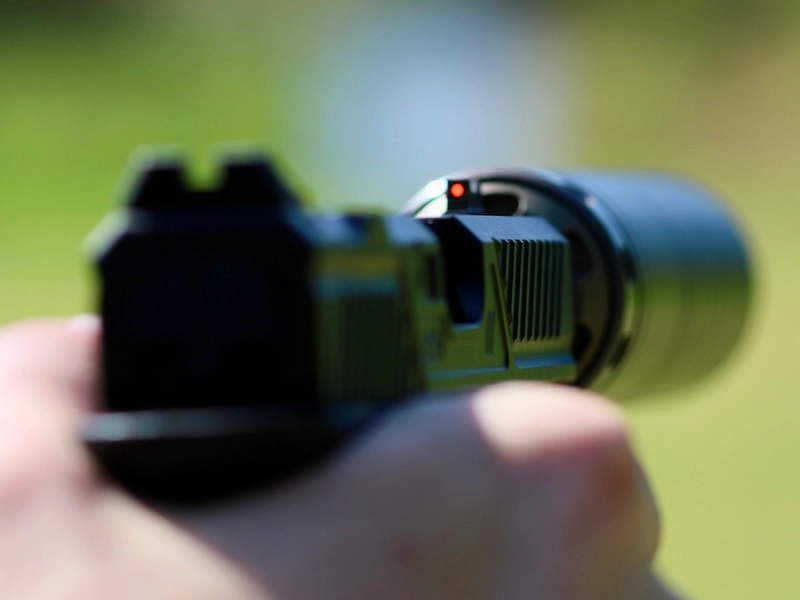
For dedicated pistol use — especially pistols with low red‑dot optics or short iron sights — pick a compact, eccentric (off‑center) design that keeps most of the can below the bore axis so it doesn’t foul your sight picture. The Osprey 2 and S98 are examples of that approach: compact, sight‑friendly designs that preserve a low profile on the slide and under optics.
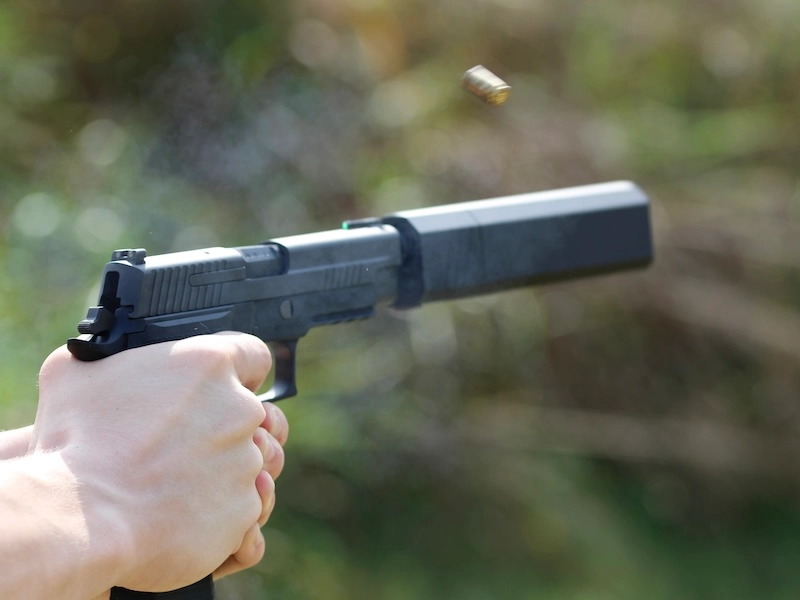
Match the suppressor form factor to your primary host: eccentric/low‑profile cans for optics‑mounted pistols, tube or tube‑less titanium designs for PCCs and sub‑guns, and hybrids if you want one can to do everything.
Finally — and this can’t be overstated — make sure you have the correct piston/mount for your threaded barrel.
No matter what suppressor you choose, be sure to include the piston that fits your barrel. You do have a threaded barrel, yes?
You’re going to need a threaded barrel.
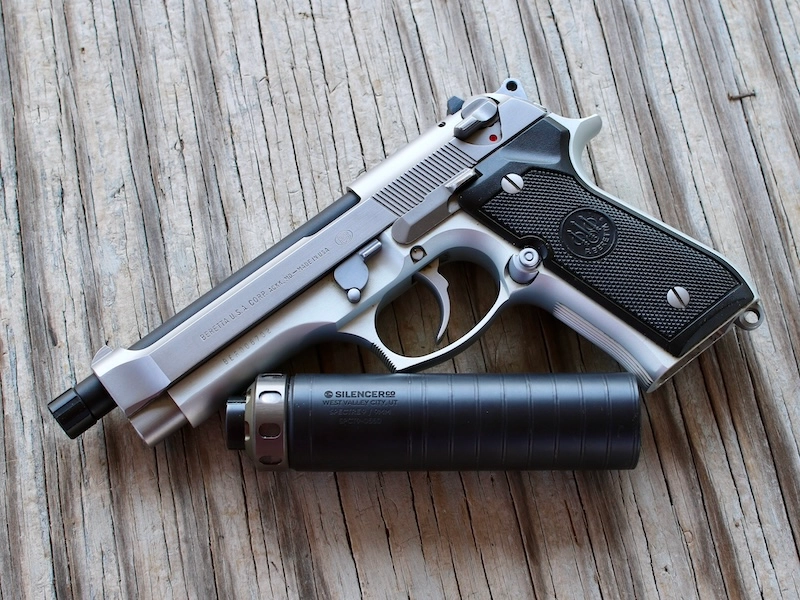
Essential Modifications: Threaded Barrels
This is a must. Most of us who are devoted to noise reduction make this a prerequisite for the guns we buy. If you need one as an add-on, SilencerCo makes barrels for many 9mm guns.
If you can’t find an aftermarket barrel, I’d suggest looking for a new gun to suppress.
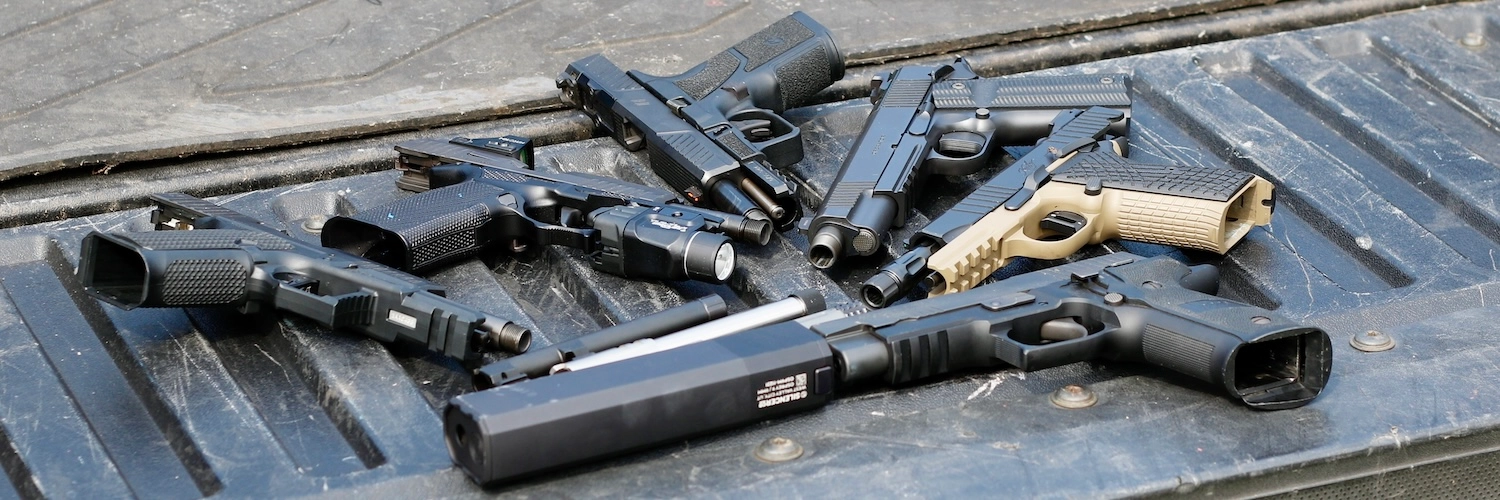
What Does a Suppressed 9mm Sound Like?
Most commercial 9mm bullets are fast-moving projectiles that cross the sound barrier (1,125 FPS), making a sharp supersonic crack that is damaging to hearing. Even when suppressed, the noise can be uncomfortable (especially with frequent handgun fire). I’d recommend looking for heavier ammo.
The lighter the projectile, the faster it is likely to fly. Polymer-based frangible rounds are fast. 115 grain ball, too, is usually at or above that threshold. But once you move up closer to 150 grain bullets, 9mm should be under the 1,125 FPS point. 147 grain 9mm is your best bet.
Bullet shape, here, is also worth noting. Flat-nosed bullets may cause feeding issues. Round-nose or conical ball would be better.
The end-goal is gunfire under 140 dB. With the right combination of suppressor and ammunition, this is easily achieved.
Ammo retailers like AmmoToGo, who provided 147 grain Federal 9mm for this article, will often have a dedicated subsonic section. This is useful, but don’t forget to check the normal 9mm selection, too, as you will likely find 147 grain, or higher weights, that aren’t marketed specifically for suppressed shooting.
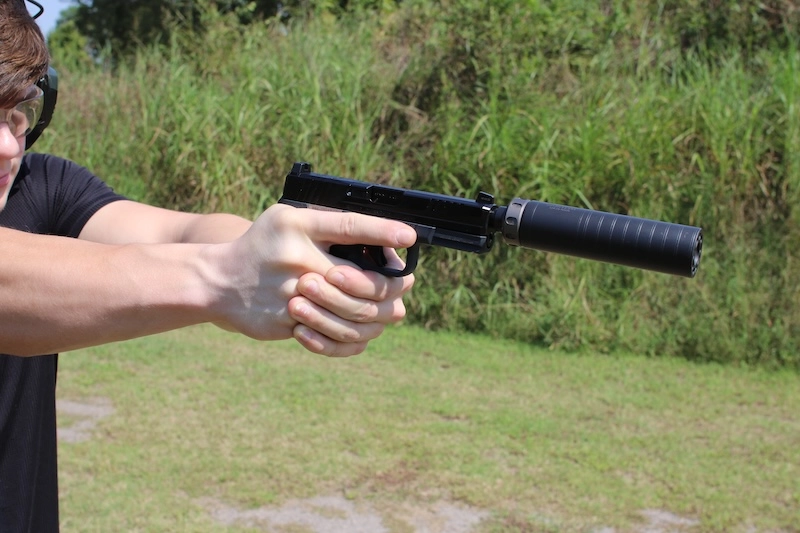
Wrapping up
If you’ve made it this far in the article, I may not need any final words of encouragement. I’ll provide them, nonetheless. Suppressing a 9mm is relatively easy, if you have the right barrel, piston, and suppressor. And the results are addictive.
David Higginbotham
The post Suppressing a 9mm Handgun: A Practical How-To Guide appeared first on SilencerCo.
“]]



